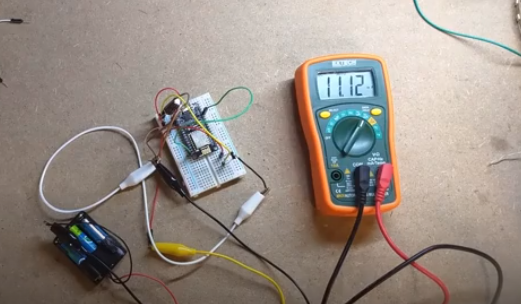I went ahead and tested it by sticking it on my garage door with electrical tape.

Very classy :).
It did work though, that was exciting.
I used a different voltage regulator with a lower quiescent current or idle current draw, thinking that would solve my current draw in deep sleep woes. But no such luck.

That made it worse... Back to the drawing board.
My next idea was to do a completely different setup.
I'd been playing with a super low current microcontroller from holtek, the HT68F001. It draws like 6ua while running. My idea that I came up with is to let the Holtek microcontroller monitor the switch state and wake up or power on the nodemcu when the state changed. That way I wouldn't have to draw much power and I could continuously check the state of the switch, which was a win for some other projects I wanted to try.
So the final circuit I came up with is something like this:

If you want to see a better version check out the github page, it has a kicad version.
What the circuit is showing is the holteck and the nodemcu are both tied into the tilt switch, both using input pullup on those pins. Then theres a voltage regulator that has an enable pin that will power the nodemcu. The holtek chip has a pin going to that enable pin so it can turn on and off the nodemcu. Then theres another connection between the holtek and nodemcu, where the nodemcu can signal that its ready to shut down. And the holtek is powered by its own low quiescent current voltage regulator.
Checking the current draw with the nodemcu turned off turned out pretty good, it got down to .17 ma, or 170ua, a huge improvement.

The next steps are to get it all mounted on a circuit board and put it in a case.
 ThinkLearnDo
ThinkLearnDo
Discussions
Become a Hackaday.io Member
Create an account to leave a comment. Already have an account? Log In.